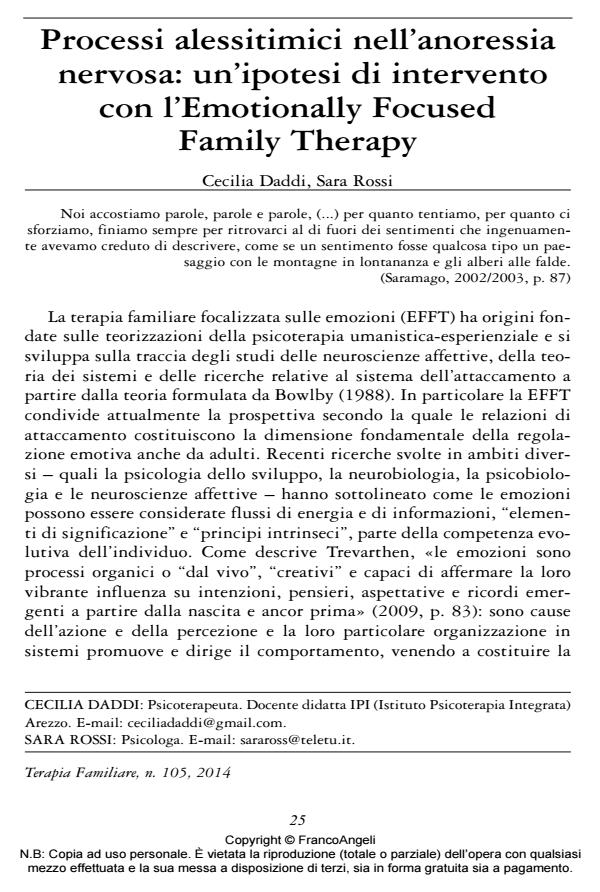Processi alessitimici nell’anoressia nervosa: un’ipotesi di intervento con l’Emotionally Focused Family Therapy
Titolo Rivista TERAPIA FAMILIARE
Autori/Curatori Cecilia Daddi, Sara Rossi
Anno di pubblicazione 2014 Fascicolo 2014/105
Lingua Italiano Numero pagine 28 P. 25-52 Dimensione file 168 KB
DOI 10.3280/TF2014-105002
Il DOI è il codice a barre della proprietà intellettuale: per saperne di più
clicca qui
Qui sotto puoi vedere in anteprima la prima pagina di questo articolo.
Se questo articolo ti interessa, lo puoi acquistare (e scaricare in formato pdf) seguendo le facili indicazioni per acquistare il download credit. Acquista Download Credits per scaricare questo Articolo in formato PDF

FrancoAngeli è membro della Publishers International Linking Association, Inc (PILA)associazione indipendente e non profit per facilitare (attraverso i servizi tecnologici implementati da CrossRef.org) l’accesso degli studiosi ai contenuti digitali nelle pubblicazioni professionali e scientifiche
L’ipotesi basilare di questo lavoro è che i DCA e i comportamenti/atteggiamenti relazionali correlati, sono indicatori di particolari strategie emotive. In particolare, viene presa in considerazione l’anoressia come indicatore di una strategia di regolazione affettiva evitante, con riferimento a processi dissociativi alessitimici, sviluppati tramite relazioni di attaccamento precoci insicure. Alla luce di tali premesse teoriche, gli autori ipotizzano una particolare efficacia di trattamento, tramite approcci riferiti alle Attachment-related therapy e alle Affective balance therapy. Viene quindi esaminato come esempio in tal senso la EFFT (Emotionally Focused Family Therapy), la cui efficacia è discussa e collegata a ipotesi teoriche e ricerche empiriche relative a processi evolutivi e intersoggettivi di regolazione affettiva.
Parole chiave:Emotionally Focused Family Therapy, alessitimia, anoressia, attaccamento, regolazione affettiva, intersoggettività
- Tale of Two Continents: Environmental Management-Based Regulation in the European Union and the United States Rachel E Deming, in SSRN Electronic Journal /2016
DOI: 10.2139/ssrn.2748229
Cecilia Daddi, Sara Rossi, Processi alessitimici nell’anoressia nervosa: un’ipotesi di intervento con l’Emotionally Focused Family Therapy in "TERAPIA FAMILIARE" 105/2014, pp 25-52, DOI: 10.3280/TF2014-105002